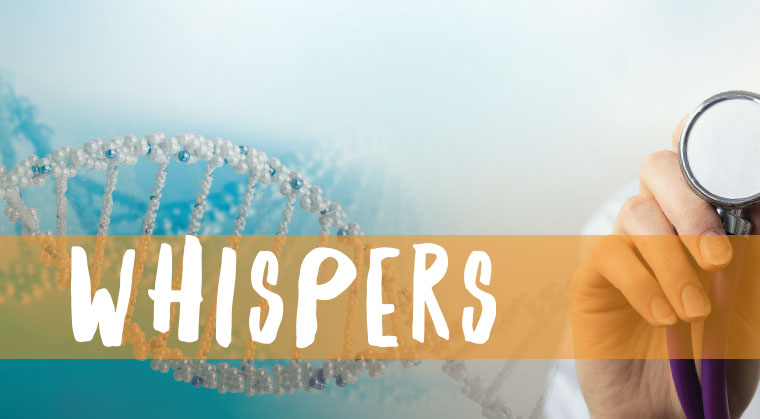Whispers: Chapter 14


B
ed. Safety, comfort — and a barrier holding me back.
At my six-week checkup, the doctor pronounced me well on my way to healing and advised me to go ride a rollercoaster — I needed to get moving. But the pain…I just couldn’t do it… Yet if I wanted to recover my health, I didn’t have a choice.
I went from my bed to the airport, to Florida, as the newest addition on the Kids of Courage summer trip. With around 100 campers and 300 staff members, including an extensive medical team, the campers and I were ready for the experience of a lifetime. I beeped my way through the airport scanners, then discovered on the plane that my rods were shaped one way and the airplane seat another, we just didn’t click…I shifted, moaned, popped pills, and made it there.
When I arrived at the Florida hotel, I crashed onto four chairs on the edge of the welcome hall. I took a look around me. In wheelchairs, attached to oxygen tanks, minus limbs, and in all shapes and sizes was the bravest group of people I had ever met. For the first time in my life, I found myself in a place that admired differences. I witnessed acceptance in its most beautiful form. As I finally sank into my hotel bed, I began to wonder, what was it that had made me work so hard to hide Marfan’s from the world? Just because it was hidden, did it have to remain that way?
For ten days, I dragged my body through the schedule, determined to get stronger as fast as possible, and gaining inspiration from the campers around me who battled their own pain every day. My Kids of Courage tee-shirt earned me respect from amusement park employees and an evaluating look; camper or counselor? In this euphoria of celebrating each and every life, I still didn’t fit in. Externally, I’ve always been free to integrate into “regular” society, but couldn’t quite perform on a regular level. As I lay on a park bench, exhausted, unable to pull myself a step further, most people took a look and assumed I was just chilling.
At the end of the trip, I was back in my own bed, inspired, stronger, and confused. Why didn’t Marfan’s fit anywhere? And I wondered: Were there any other people out there like me, with a hidden disability?
Oops! We could not locate your form.







